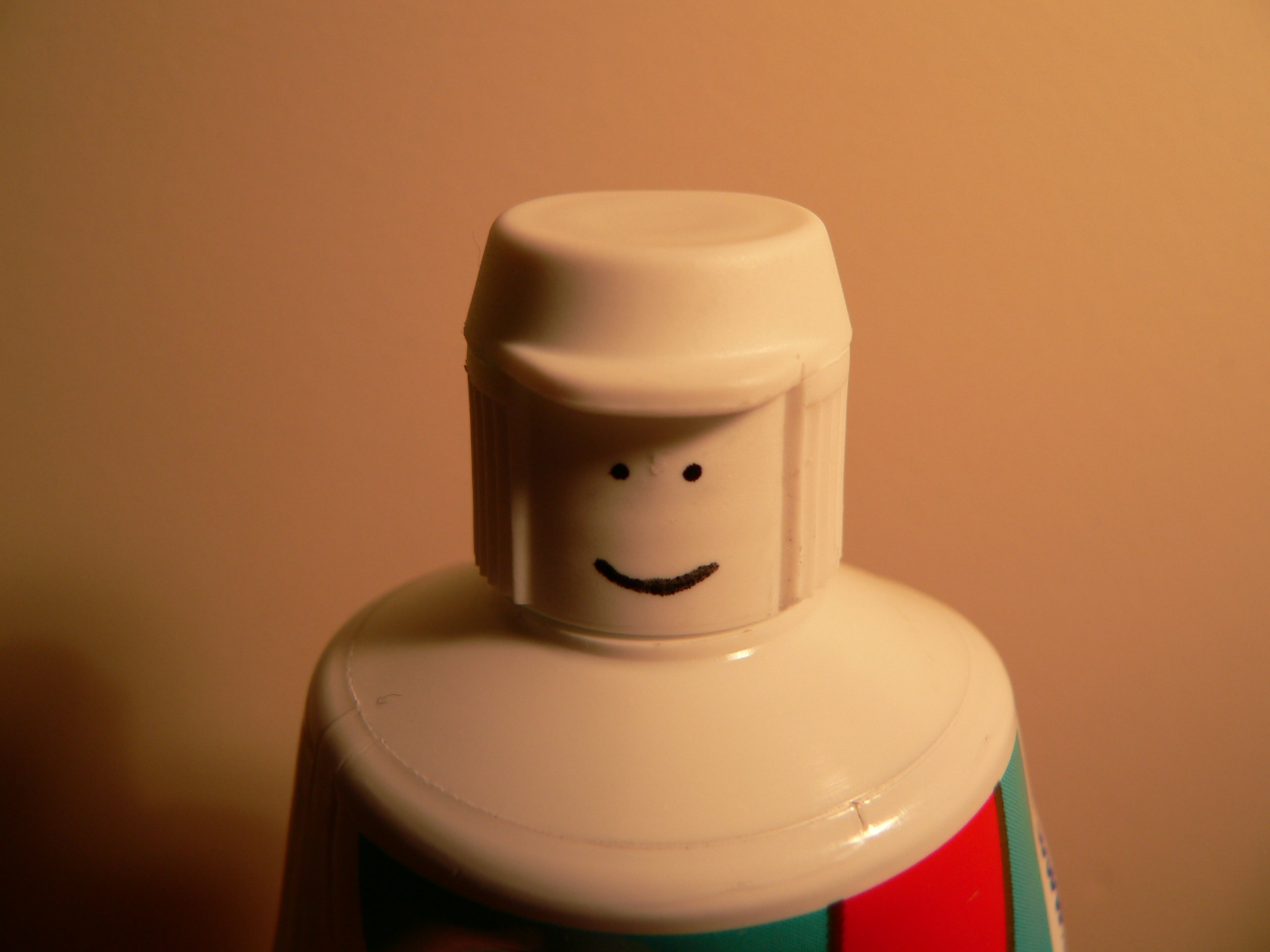Homemade Toothpaste Recipes – Using Natural Ingredients to Whiten Your Teeth
Put the health of your teeth first with these homemade toothpaste recipes. Great for allergy sufferers, sensitive teeth, and fans of organic ingredients.

Image from Jonas Bengtsson on Flickr.
In recent years, the number of people choosing to invest in ‘all natural’ toothpaste recipes has soared. And so has the amount of people experimenting with their own homemade toothpaste formulas. There are lots of different reasons why this can be useful thing to do.
For example, you might be allergic to some of the ingredients in commercial toothpaste recipes. In fact, for allergy sufferers and those who are over sensitive to some of the ingredients in standard toothpaste products, it can often be easier and more affordable to create an alternative.
However, you must always remember that this is something that is designed to be used in the mouth. Even though toothpaste is not ordinarily swallowed, small amounts are inevitably ingested. It is absolutely imperative that you make sure your chosen recipe is safe for consumption. You can do this by carrying out your own online research into the ingredients.
You must only use substances that are natural, approved, and widely available. This is the best way to ensure that you end up with a toothpaste recipe that is not only safe but effective too. As for dentists themselves, they would usually rather patients stick to regulated products, but they understand that commercial formulas do not work for everybody.
The Argument for Homemade Toothpaste
The two main reasons why a person might choose to create their own toothpaste recipe are because they are allergic to standard brands or because they wish to use a more organic formula than is available commercially. While modern toothpaste products are very kind to the mouth and body, there are still plenty of people who prefer not to expose their teeth to fluoride, titanium dioxide, or any kind of artificial colourings.
This is a personal decision and dentists are keen to respect patient judgements, as long as they do not jeapordise the health of teeth. So, if you ask your dental specialist about homemade toothpaste recipes, he or she will likely give you a list of things to avoid. If your dentist strongly advises you against using a homemade formula, however, they probably have a good reason – ask questions, before you give in to stubbornness.
If you have a sensitivity to one or more of the ingredients in commercial toothpaste recipes, you can either invest in an all-natural, organic formula from a health food store. Or, you can think about creating your own version. For those who suspect that they might be allergic, but are not quite sure, check for peeling skin on the side of your cheeks. This is called ‘mucosal sloughing’ and it occurs when the mouth tissues are burnt away following a bad reaction.
This condition is mostly harmless and rarely painful, but it should still be identified and controlled. The peeling is a signal from your mouth – it is telling you that you need to change your toothpaste brand. The more energy that the tissues have to put in to repairing the damage, the less resources they have for keeping the rest of your mouth healthy. Good dental health is all about balance.
The Ingredients Causing Controversy
The debate surrounding commercial toothpaste recipes can get a little confusing, especially for people who have never questioned the safety of their brand before. The thing to remember is that commercial products have been approved by regulators and deemed safe for use by the general public.
The case for homemade recipes is made on the grounds that formulas without artificial compounds or chemicals are superior. So, it is not really a question of safety, but of personal preference. This is an important distinction to make, because misinformation and inaccuracies are what lead to risky practices.
Here are some of the chemicals that you might want to avoid by creating your own homemade toothpaste recipe. There is triclosan and sodium lauryl sulfate (SLS), both of which can slightly increase the risk of canker sores in some people. And then there is titanium dioxide. There is no evidence to suggest that this chemical is unsafe in any way, but campaigners for organic products claim that it is not needed.
Titanium dioxide whitens the teeth, rather than having much to do with cleaning, so you might prefer to eradicate it. A lot of parents choose to steer clear of toothpaste brands containing artificial colorings, because they can aggravate the symptoms of ADHD and cause hyperactivity in children. The glycerine in toothpaste is, again, not toxic or harmful, but many people believe that it dries out the mouth.
The Complicated Case of Dental Fluoride
By far the most controversial and complex ingredient contained in commercial toothpaste products is fluoride. For many years, campaigners have been lobbying both for and against its use in dental formulas. On the one hand, it is very good for teeth. It helps them to stay strong and resist cavities and decay. But, on the other, it can cause sickness if ingested in large amounts.
Fluoride is also present in much of the tap water that we drink, so it has always been a topic of much debate and disagreement. According to scientific research, low level doses of fluoride do not cause any harm to the body. It is useful for the teeth and gums to be exposed to this substance. However, it should not be swallowed after brushing and the amount given to children must be carefully monitored.
This is why, on all toothpaste packets, there is a guideline stating that children should be given only a pea sized amount of toothpaste for brushing. Ultimately, fluoride is toxic, but only in the kind of amounts that you simply would not be ingesting in any normal circumstance. Even water can be toxic, if drunk in dangerous quantities, so this is not an unusual situation. However, you may still wish to avoid fluoride by creating your own toothpaste recipes.
The Best Ingredients to Use in Homemade Recipes
The following section will outline some of the healthiest and most effective natural ingredients for homemade toothpaste formulas. These substances have all been judged safe for ingestion and consumption, but you should still use them in the same way as you would ordinary toothpaste – brush, spit, repeat, rinse.
Coconut Oil
This ingredient is great for boosting the amount of microbiome in your stomach. And, it is a natural way to help the mouth resist fungal infections and candida. There is some vague evidence to suggest that coconut oil can reduce levels of plaque and other bacteria, but this is far from being an established medical fact, so use your own judgement here.
Unrefined Cocoa Beans
Unprocessed cocoa beans, or ‘cacao nibs,’ are just regular cocoa beans that have not been through any kind of refining phase. They are usually sold in little pieces (nibs) in health food stores and organic supermarkets. It might come as a surprise to find that chocolate makes a great ingredient for toothpaste, but the compounds in the beans actually encourage and support remineralization.
Bentonite Clay
This is an all-natural alkaline clay. It is packed full of valuable minerals and it has the right consistency to act as a dental scrub, without also scouring away any of the good stuff. It helps to lower the level of acidity in the mouth and it is 100% organic. If you are currently thinking, ‘But isn’t clay dirt?’ you would be right. The difference is that this dirt can work wonders for the heath of your teeth.
Xylitol
Xylitol is known to reduce the amount of plaque in the mouth. It can also be used as a handy substitute for sugar in your tea, coffee, and snacks. However, as it is an alternative sweetener of sorts, you need to use it sparingly. It will not harm your teeth, but it may have you craving more sugar than normal if you use too much.
Baking Soda
It is the alkalinity of baking soda that it so useful for dental health. The biggest danger for teeth is the acid produced by plaque and there is one thing that neutralizes acids – alkalis. The vast majority of homemade toothpaste recipes do contain baking soda for this very reason. It has a PH level of 9 to 11, so it will clean your teeth without scouring at them too harshly.
The Substances and Ingredients to Avoid
Now, we will take a look at the substances that it is best to avoid in your homemade toothpaste recipes. This is particularly important for anybody concerned about natural ingredients and organic compounds. If you want an ‘all natural’ toothpaste recipe, leave these chemicals out.
Acidic Ingredients
You are strongly advised to steer clear of anything with a PH reading of below seven or higher. The very last thing that you want to do is introduce more acids to your mouth, so stick with neutral or alkaline recipes. You can pick up some cheap PH testing strips online and use them to assess the acidity of any homemade recipe that you create.
Hydrogen Peroxide
While hydrogen peroxide is routinely included in dental whitening products (and it is safe), it does not really offer the same value in toothpaste formulas. This is because it needs to be applied to the teeth and left there for long enough to take effect. It really has no impact on brushing whatsoever, because three minutes is not long enough. So, there is no reason why you need hydrogen peroxide in your toothpaste. If you are interested in whitening products, go ahead and use it, but only in this context.
Is Baking Soda Safe to Use on Its Own?
Yes, you can safely use baking soda to clean your teeth. It does not have to be incorporated into a homemade recipe. However, it is always useful to add a number of other valuable ingredients. That way, you give your teeth the best care and attention possible.
Plus, incorporating things like spearmint oil and other natural flavourings is an easy way to make sure that your homemade toothpaste tastes good. Nevertheless, if you do want to use baking soda and nothing else, just dip your toothpaste into the powder and brush as normal.
Do I Even Need Toothpaste for Cleaning My Teeth?
There are some people that forgo the need for toothpaste altogether. They use only water and substitute nothing for the conventional cleaning substances. Ultimately, there is nothing harmful about this method. You can brush your teeth with just water, or even dry, and you will not cause damage.
On the other hand, you will not be cleaning your teeth in the most thorough way either. The slightly abrasive qualities of toothpaste are what make it such a good way to polish teeth and leave them looking and feeling shiny. For high quality dental care, you do need to be using toothpaste, whether it is your own recipe or a commercial product.
Three Very Simple Recipes for Homemade Toothpaste
-
Super Basic ‘One Use’ Toothpaste
This is a really easy recipe, but you will need to make it each time that you want to brush your teeth with it. The good news is that it takes minutes to put together, so you could always just keep the ingredients close at hand in a bathroom cabinet or cupboard.
Ingredients
One teaspoon of baking soda
Half a teaspoon of finely ground sea salt
One drop of peppermint essential oil
Three drops of water
Method
Combine all of these ingredients in a small bowl or contained. Keep mixing together until a fairly thick paste has emerged. At this point, you can dip your toothbrush in the bowl and cover it with the mixture. Brush as you usually would.
-
All Vegan Homemade Toothpaste
If you are keen to avoid any type of animal based product, it could be a good idea to put together your own ‘all vegan’ recipe. Use this super simple formula if you are not sure where to start. It does contain glycerine, but only vegetable derived glycerine – there are no animal products contained in this recipe.
Ingredients
Two teaspoons of vegetable glycerine
Four tablespoons of baking soda
Half a teaspoon of guar gum
Eight tablespoons of water
Five drops of peppermint essential oil
Method
Combine all of the ingredients in a saucepan. Cook on a very low heat and keep stirring all the time. After about five minutes, the ingredients should start to form a paste. Let this cool, add more peppermint oil if you feel like the taste needs improving, then pour the mixture into a clean plastic or glass jar. Store this jar at room temperature and use it whenever you need.
-
Deliciously Tasty Coconut Toothpaste
This recipe is very similar to the all vegan formula. The only real difference is that it replaces glycerine with coconut oil. If you are concerned about the taste of your homemade toothpaste recipe, adding an ingredient like coconut (which is quite strong) will mask the bitterness of baking soda and other ingredients. And, you can always add a couple of drops of a natural sweetener (like stevia), if you still feel like it needs improving.
The addition of hydrogen peroxide will not be for everybody, but you can always opt for a different recipe if you are trying to avoid this substance.
Ingredients
Six teaspoons of baking soda
A quarter teaspoon of hydrogen peroxide
Two tablespoons of coconut oil
Ten drops of peppermint essential oil
Method
Pour the baking soda into a bowl. Add the other ingredients, one by one, and mix until you get a fairly rigid paste. If your mixture turns out to be too wet and runny, add a little more baking soda. If it is a flaky and powdery result, fix it by adding a little more coconut oil. You can add as much peppermint oil as you like; everybody has their own judgements on how much tastes good. You need to store this toothpaste mixture in an opaque jar or container.
-
Remineralizing and Whitening Toothpaste
You can put together a super healthy formula that will help your teeth to regenerate quickly and stay as strong as possible, for as long as they can. Of course, this toothpaste recipe does need to be combined with a healthy diet and regular flossing to be effective.
Ingredients
Five teaspoons of calcium powder
Three teaspoons of baking soda
Half a teaspoon of unprocessed sea salt
Five droplets of coconut oil
Half a teaspoon of stevia sweetener
Method
Combine the calcium powder and the baking soda in a bowl. Add the coconut oil, drop by drop, until you start to get a stiff paste. Then, add the rest of the ingredients and any essential oils that you are including for taste. Pour into a small container and store away from direct sunlight. This recipe can be used for cleaning teeth as regularly as is needed (at least twice per day).





